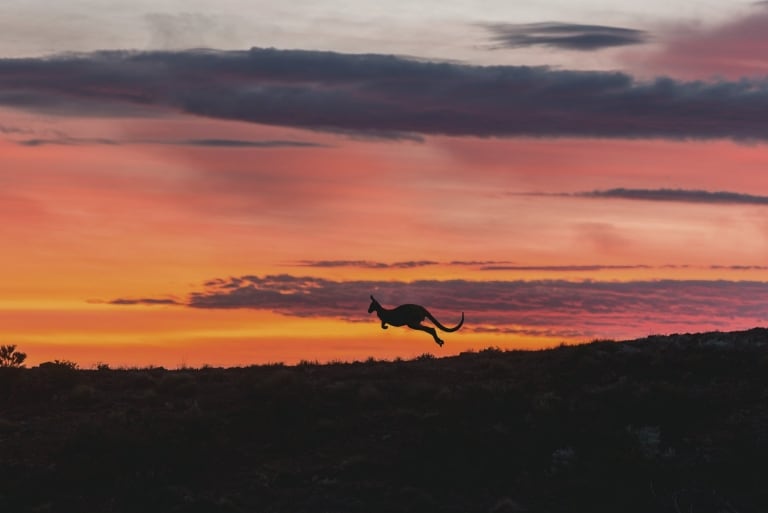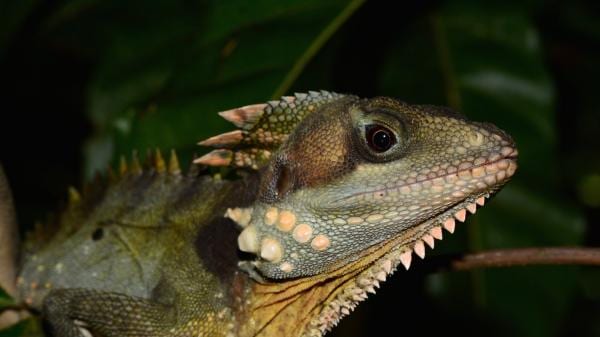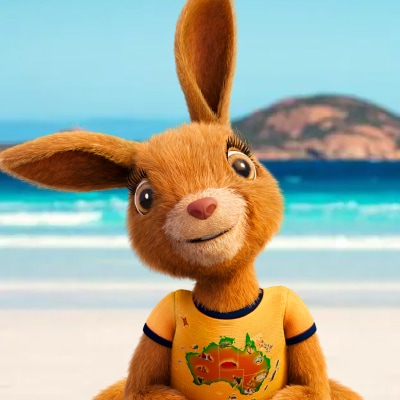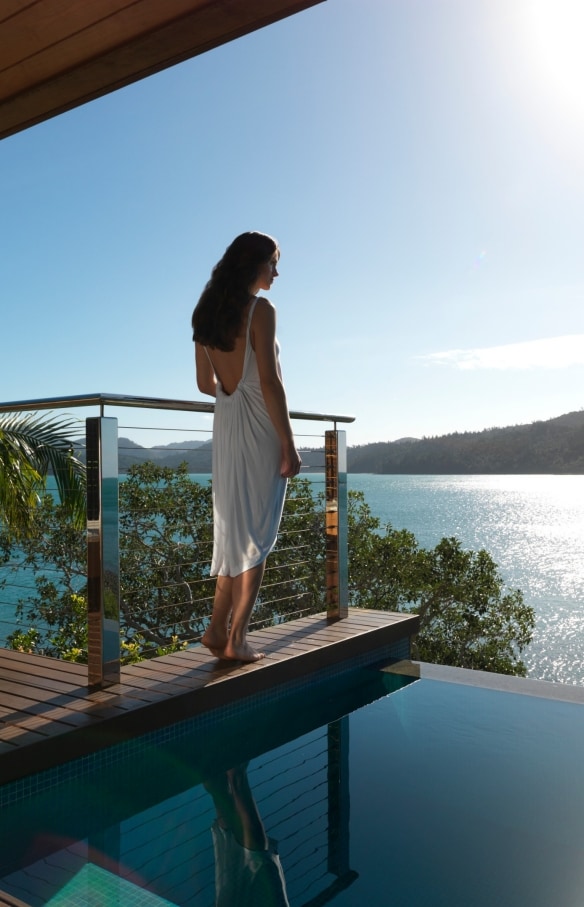
Australian Wildlife Journeys
Australian Wildlife Journeys showcase immersive wildlife encounters in nature, with a focus on interpretative guiding and conservation activities.
Australia boasts a truly remarkable wildlife story, being home to the world’s most biodiverse waters, the highest number of endemic bird species, the highest number of reptiles and fascinating marsupials. From birdwatching in Kakadu National Park, snorkelling with whale sharks in Ningaloo Marine Park, whale watching off Margaret River, swimming with turtles on the Great Barrier Reef or spotting wild koalas along the Great Ocean Road, the group caters to wildlife enthusiasts that are eager to connect with various wildlife categories across diverse habitats, while supporting guides in the regeneration of precious ecosystems.
Explore by map
New South Wales

Brush-tailed possum, Boutique Wildlife Tours, Southern Highlands, New South Wales © Boutique Wildlife Tours
Boutique Wildlife Tours
The Southern Highlands is located southwest of Sydney and forms part of the Great Western Wildlife Corridor, a key link for wildlife migration. Boutique Wildlife Tours has been offering unique small-group wildlife viewing experiences here from Sydney since 2010. Guests can enjoy native animals at their most active time around dusk and go spotlighting with red-filtered flashlights, to observe numerous nocturnal marsupial species including brush-tailed possums, greater gliders, sugar gliders and common wombats. Plus, several rivers flowing through the region provide the special opportunity to spot our elusive platypus.

Sydney Bespoke Tours, Sydney, New South Wales © Sydney Bespoke Tours / Australian Wildlife Journeys
Sydney Bespoke Tours
From cuisine to culture, the team at Sydney Bespoke Tours are experts in all things Sydney. During the Sydney Wildlife Safari, you'll venture through the lush bushland of the Southern Highlands, trailing alongside an expert local guide who will help you spot and identify the region's local creatures. Keep your eyes peeled for emus, wallabies and kangaroos as well as a rich diversity of birdlife including the Superb Lyrebird. Learn the significance of the Great Western Wildlife Corridor on your way to dinner at a cozy country inn, before embarking on a nocturnal wildlife walk in search of night-lovers like wombats and brush-tailed possums.
Northern Territory

Saltwater crocodile, Lords Kakadu & Arnhemland Safaris, Kakadu National Park, Northern Territory © Lords Kakadu & Arnhemland Safaris
Lords Kakadu & Arnhemland Safaris
Lords Kakadu and Arnhemland Safaris has been connecting guests to the Northern Territory’s ‘Top End’ for over 25 years. Join one of their epic adventures southeast of Darwin to Kakadu National Park, one of the world’s most magnificent natural reserves. Explore a landscape boasting 280 bird species, 77 mammals, 50 species of freshwater fish, 132 reptiles and more than 50,000 years of Aboriginal history and culture. It's the massive population of the world’s largest reptile, the saltwater crocodile, that makes this area so famous, but you'll also learn first-hand that the wetlands of Kakadu are a birdwatcher’s paradise, while the combination of floodplains, savanna woodlands and sandstone cliffs provide sanctuary for a thrilling diversity of creatures.
Queensland

Boyds forest dragon, FNQ Nature Tours, Daintree National Park, Queensland © FNQ Nature Tours

Travel tip
Don't miss the night walk tour where you'll see the rainforest's nocturnal inhabitants, like owls and bandicoots, at their most active.
FNQ Nature Tours
Tropical North Queensland is a wildlife enthusiast’s paradise, being the only place in the world where two World Heritage-listed areas exist side-by-side, an exceptionally rare combination of ecology is found here. FNQ Nature Tours provides expertly led small group tours across the Daintree Rainforest National Park, Atherton Tablelands, Crater Lakes and Cape Tribulation regions. The area boasts the highest diversity of rainforest mammals in Australia, including the Bennett's and Lumholtz tree kangaroos, spectacled flying-fox, Daintree River ringtail possum and northern long-nosed bandicoot. The region is also home to almost 400 species of birds, and saltwater crocodiles and the Boyd’s forest dragon are a sample of the 162 species of reptile.

Clownfish, Frankland Islands Reef Cruises, Frankland Islands Queensland © Frankland Islands Reef Cruises/Australian Wildlife Journeys
Frankland Islands Reef Cruises
One of the many jewels in the crown of the Great Barrier Reef, Frankland Group National Park is a sprinkling of gorgeous islands off the coast of Cairns, protected for their cultural and ecological significance. Frankland Islands Reef Cruises are the only tour operator permitted to enter the national park, inviting just 100 visitors per day to explore Normanby Island with conservation at the forefront. Drive through lush rainforest and spot crocodiles on a river cruise before arriving at the island paradise. Watch bird life from sandy banks, wade in shallow rock pools or swim with stunning marine life on a guided snorkel, gazing at the likes of graceful sea turtles and clown fish in rare jewel-blue anemones.

Humpback Whale Mugging, Hervey Bay, Queensland © Pacific Whale Foundation Eco-Adventures Australia
Pacific Whale Foundation Eco-Adventures Australia
Hervey Bay is home to some of the world’s most active whales, making breaches, whale songs and muggins a regular occurrence. Between July and October, these majestic creatures migrate to and from the Southern Ocean, and with Pacific Whale Foundation Eco-Adventures Australia, you get the chance to see them up close and personal. On board, the marine experts will blow your mind with detailed life histories of over 6,000 individual humpback whales, and make sure to have your camera ready as they like to show off as they swim by. Each ticket for this eco-tour supports whale research, marine education and ocean conservation around the world, so not only will you be doing good, you’ll be having fun whilst doing it.
South Australia

Tammar wallaby, Exceptional Kangaroo Island, Kangaroo Island, South Australia © Exceptional Kangaroo Island
Fun fact
Emus and kangaroos were both chosen to appear on Australia's Coat of Arms because they can't move backwards easily, representing a nation that's always moving forward.

Exceptional Kangaroo Island
Kangaroo Island is Australia’s third largest island, with over one third of its land declared as national or conservation park. Exceptional Kangaroo Island has been providing expert interpretation of the numerous endemic species and local sub-species that inhabit this incredible sanctuary for over 25 years. Over 90 per cent of the terrestrial wildlife habitat is mallee and woodland, dominated largely by eucalyptus, with shrubland, fernland and forest. This provides an opportunity to spot a vast range of animals including Kangaroo Island kangaroos, Tammar wallabies, short-beaked echidnas, koalas, Rosenberg’s goanna and 260 species of birds,. The marine environment is equally diverse, with the opportunity to walk on a beach with Australian sea lions and spot long-nosed fur seals.

Australian sea lion, Australian Coastal Safaris, Eyre Peninsula, South Australia © Australian Wildlife Journeys
Australian Coastal Safaris
The Eyre Peninsula is considered Australia’s ultimate temperate aquatic playground, featuring striking coastlines, vast sand dunes, rugged offshore islands, secluded coves and picturesque coastal heathlands. Australian Coastal Safaris has been showcasing the region’s unique aquatic activities since 2005, including swimming encounters with Australian sea lions and bottlenose dolphins, cage diving with the ocean's most formidable predator, the great white shark, and southern right whale watching. Experiences are not limited to the vast shoreline, with the region home to distinctive rock formations, a rich geological history and a variety of flora and fauna including 270 species of birds and 1,900 native plant species.

Murray River, South Australia © Murray River Trails
Murray River Safari
Stretching more than 2,520 kilometres (1,565 miles), the Murray River is Australia’s longest river and one of its most important and iconic ecosystems. One of the river’s most scenic sections is the Riverland Ramsar Wetland area, which includes more than 200 kilometres (125 miles) of winding creeks. On the three-day guided Murray River Safari with Murray River Trails, you’ll learn about the region's history, geology, culture, people, environmental challenges and regenerative opportunities as you canoe, cruise, bushwalk and drive.Explore river red gum forests, ephemeral lakes and untouched riverine habitats home to more than 180 endemic bird species as well as koalas, red kangaroos and brush-tailed possums.
Tasmania

Tasmanian devil, Premier Travel Tasmania, Tasmania © Australian Wildlife Journeys
Premier Travel Tasmania
Australia’s largest island is the beautiful state of Tasmania, where around 40 per cent of land is protected. Premier Travel Tasmania has been sharing this pristine region’s abundant wildlife, diverse flora and rich heritage for over twenty years. Renowned as a prime area for marsupial spotting, Tasmania is a crucial habitat for many lesser known species, including eastern and spotted quolls, eastern barred and southern brown bandicoots and long-nosed potoroos. Tasmanian endemic birds such as the Tasmanian scrubwren, green rosella, black currawong and Tasmanian wedge-tailed eagle are popular sightings, whilst the marine offerings are spectacular including colonies of Australian fur seals, common dolphins and adorable little penguins.

Common wombat, The Maria Island Walk, Maria Island, Tasmania © The Maria Island Walk
Read next
Top walks and hiking tracks in Tasmania
The Maria Island Walk
Located just off Tasmania’s east coast, World Heritage-listed Maria Island is home to historic ruins, picturesque bays, rugged mountains and amazing fossils. For many visitors though, it is the island’s remarkable rare birds and animals, largely unaffected by human presence, that are the highlight. The Maria Island Walk is a four-day trek that brings these remarkable wildlife stories to life through expert interpretative guides. As a vital location for threatened and endangered species, Maria Island offers frequent opportunities to spot wombats, Cape Barren geese, Forester kangaroos, Bennett’s wallabies and Tasmanian pademelons, along with all of Tasmania’s endemic birds.
Victoria

Koala, Echidna Walkabout Nature Tours, You Yangs, Victoria © Echidna Walkabout Nature Tours
Echidna Walkabout Nature Tours
Connecting travellers with the diverse wildlife across the You Yangs mountain range, Great Ocean Road and East Gippsland has been the passion of Echidna Walkabout Nature Tours for over 20 years. A blend of magnificent lush rainforests, coastal heathlands, dramatic sea cliffs, pristine rivers and grassy plains provide the opportunity to see a truly remarkable number of Australia’s iconic species. Venture out with a koala researcher to learn about the history and behaviour of individuals within the colony, spy a rich array of marsupials from red-necked wallabies to short-beaked echidnas and search for shyer forest dwellers, including yellow-bellied and greater gliders.
Western Australia

Whale shark, Exmouth Dive & Whalesharks Ningaloo, Ningaloo Marine Park, Western Australia © Exmouth Diving Centre
Exmouth Dive & Whalesharks Ningaloo
As the region’s original eco-tourism operation, Exmouth Dive & Whalesharks Ningaloo is synonymous with experiencing the aquatic treasures of the World Heritage-listed Ningaloo Reef Marine Park, home to the world's largest fringing coral reef. From March to August each year, visitors can swim with gentle whale sharks, the world's largest fish, while incredible humpback whale swims are not to be missed from August to November. Manta rays, dugongs and turtles can be seen year-round, alongside the reef's 250 species of corals and over 450 different species of fish.

Killer whale, Naturaliste Charters, Bremer Canyon, West Australia © Naturaliste Charters
Naturaliste Charters
Naturaliste Charters has been offering spectacular marine adventures across Western Australia’s southwest region for over 20 years with sustainability at their core. Among their expeditions, Bremer Canyon is one of the most sought after whale watching expeditions in the world, with over 100 killer whales returning each year from January to April. In the Margaret River region, the picturesque seaside town of Augusta is one of Australia's premier places to view humpback whales and southern right whales, while the tranquil waters of Dunsborough make the perfect backdrop to observe humpback whales and blue whales, as they escort calves back to Antarctica.

Perth Wildlife Encounters, Perth, Western Australia © Perth Wildlife Encounters / Australian Wildlife Journeys
Perth Wildlife Encounters
Set amid Australia's only marine park reserve within a capital city, Perth Wildlife Encounters will lead you on a truly spectacular expedition through ocean habitats. Embark on a gentle cruise out to the Shoalwater Islands Marine Park and dive into clear, turquoise waters. During the Three Islands Wildlife Snorkel, expect to twirl among a brilliant diversity of sea creatures including fish, sea lions and dolphins as you float over limestone reefs. Between dips on the ocean, you'll explore nearby islands, spotting an abundance of sea birds and grazing on platters of fresh local cuisine.
Christmas Island

Crab Rider, Christmas Island © Christmas Island Tourism Association
Indian Ocean Experiences
In November and December each year, Christmas Island comes alive with a spectacular migration of 60 million red crabs making their way from the island’s Jurassic-style rainforest to the tropical ocean. This migration marks the start of the island’s wet season, meaning it’s the perfect time to witness some of mother nature’s finest experiences. Join a seven-night Indian Ocean Experiences tour, which offers packages that include flights, accommodation, car hire and the tour all in one.


























































































































